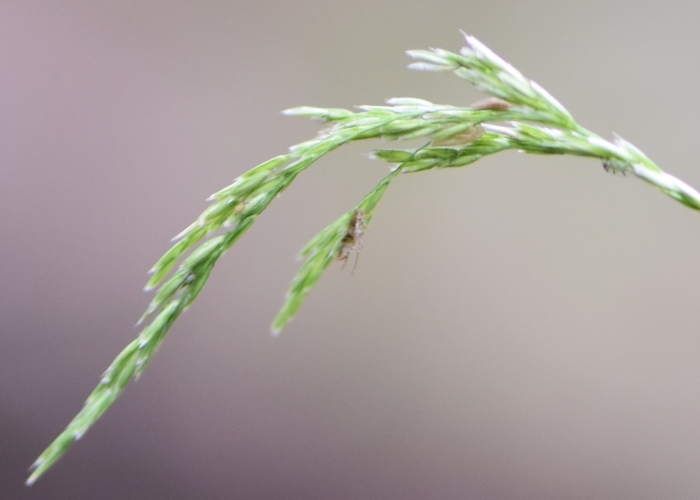Drooping Woodreed
(Cinna latifolia)
Drooping Woodreed (Cinna latifolia)
/
/

Eric Lamb
CC BY 4.0
Image By:
Eric Lamb
Recorded By:
Copyright:
CC BY 4.0
Copyright Notice:
Photo by: Eric Lamb | License Type: CC BY 4.0 | License URL: http://creativecommons.org/licenses/by/4.0/ | Rights Holder: Eric Lamb | Publisher: iNaturalist | Date Created: 2021-08-04T15:32:14-07:00 |









































Estimated Native Range
Summary
Cinna latifolia, commonly known as Drooping Woodreed, is a perennial grass native to a variety of habitats including moist woodlands, forest edges, and along streams in the Northern Hemisphere with a circumboreal distribution. It is particularly common in cool, damp environments. This species typically reaches up to two meters in height and forms loose tufts or bunches. The inflorescence is an open array of spikelets, which are usually green but may have a purple tint, and it flowers in the late summer and fall, providing a subtle visual interest in the landscape.
Drooping Woodreed is valued for its ability to thrive in moist, shaded conditions where other grasses may struggle, making it a useful choice for naturalistic plantings and restoration projects. It is often used in riparian buffer plantings to stabilize soil and filter runoff. In cultivation, it prefers full sun to partial shade and requires high amounts of water, adapting well to a range of soil drainage conditions from fast to slow. While not known for any significant horticultural problems, it can be susceptible to rust diseases in some conditions.CC BY-SA 4.0
Drooping Woodreed is valued for its ability to thrive in moist, shaded conditions where other grasses may struggle, making it a useful choice for naturalistic plantings and restoration projects. It is often used in riparian buffer plantings to stabilize soil and filter runoff. In cultivation, it prefers full sun to partial shade and requires high amounts of water, adapting well to a range of soil drainage conditions from fast to slow. While not known for any significant horticultural problems, it can be susceptible to rust diseases in some conditions.CC BY-SA 4.0
Plant Description
- Plant Type: Grass
- Height: 3-5 feet
- Width: 0.3-0.5 feet
- Growth Rate: Moderate
- Flower Color: N/A
- Flowering Season: Summer
- Leaf Retention: Semi-Deciduous
Growth Requirements
- Sun: Full Sun
- Water: High
- Drainage: Fast, Medium, Slow
Common Uses
Erosion Control, Low Maintenance, Water Garden
Natural Habitat
Moist woodlands, forest edges, and along streams in the Northern Hemisphere with a circumboreal distribution
Other Names
Common Names: Slender Woodreed, Broad-Leaved Reedgrass, Nodding Woodreed, Slender Wood Reedgrass, Cinna À Larges Feuilles, Luktven, Sötgräs, Slender Wood-Reed, 나도딸기광이, 나도딸기꽝이
Scientific Names: , Cinna latifolia, Agrostis latifolia, Cinna pendula, Cinna suaveolens, Blyttia suaveolens, Cinna pendula var. mutica, Cinna arundinacea var. pendula, Cinna expansa, Muhlenbergia pendula
GBIF Accepted Name: Cinna latifolia (Trevir.) Griseb.